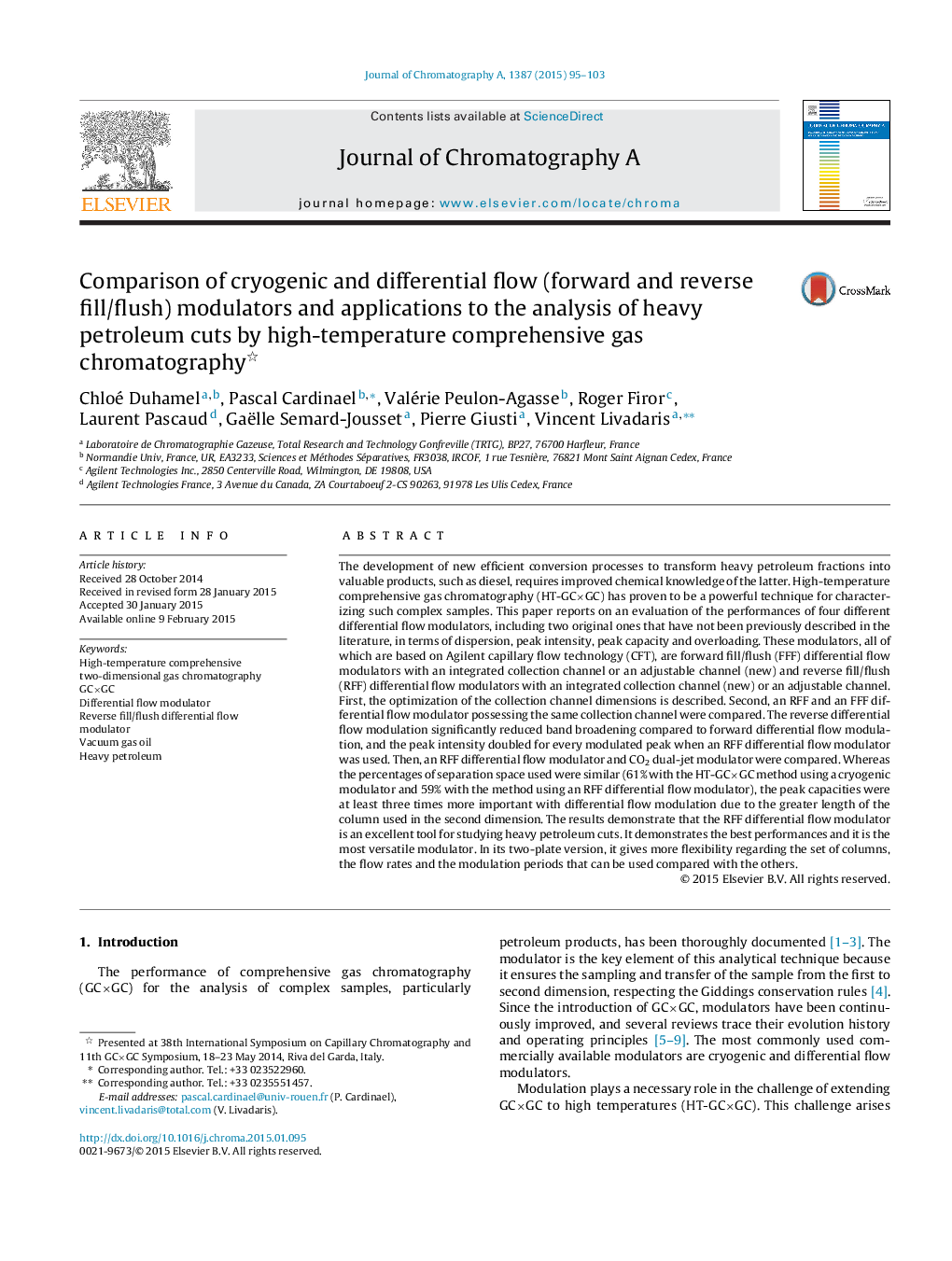| کد مقاله | کد نشریه | سال انتشار | مقاله انگلیسی | نسخه تمام متن |
|---|---|---|---|---|
| 1199368 | 1493539 | 2015 | 9 صفحه PDF | دانلود رایگان |
• Comparison of five modulators including two new differential flow types.
• Adjustable collection channel enables drastic reduction in overloading.
• Reverse fill/flush differential flow modulation increases peak capacity by comparison with a CO2 dual-jet modulation.
• Reverse fill/flush differential flow modulation reduces band broadening.
• Reverse fill/flush differential flow modulation enhances peak intensity.
The development of new efficient conversion processes to transform heavy petroleum fractions into valuable products, such as diesel, requires improved chemical knowledge of the latter. High-temperature comprehensive gas chromatography (HT-GC×GC) has proven to be a powerful technique for characterizing such complex samples. This paper reports on an evaluation of the performances of four different differential flow modulators, including two original ones that have not been previously described in the literature, in terms of dispersion, peak intensity, peak capacity and overloading. These modulators, all of which are based on Agilent capillary flow technology (CFT), are forward fill/flush (FFF) differential flow modulators with an integrated collection channel or an adjustable channel (new) and reverse fill/flush (RFF) differential flow modulators with an integrated collection channel (new) or an adjustable channel. First, the optimization of the collection channel dimensions is described. Second, an RFF and an FFF differential flow modulator possessing the same collection channel were compared. The reverse differential flow modulation significantly reduced band broadening compared to forward differential flow modulation, and the peak intensity doubled for every modulated peak when an RFF differential flow modulator was used. Then, an RFF differential flow modulator and CO2 dual-jet modulator were compared. Whereas the percentages of separation space used were similar (61% with the HT-GC×GC method using a cryogenic modulator and 59% with the method using an RFF differential flow modulator), the peak capacities were at least three times more important with differential flow modulation due to the greater length of the column used in the second dimension. The results demonstrate that the RFF differential flow modulator is an excellent tool for studying heavy petroleum cuts. It demonstrates the best performances and it is the most versatile modulator. In its two-plate version, it gives more flexibility regarding the set of columns, the flow rates and the modulation periods that can be used compared with the others.
Journal: Journal of Chromatography A - Volume 1387, 27 March 2015, Pages 95–103
